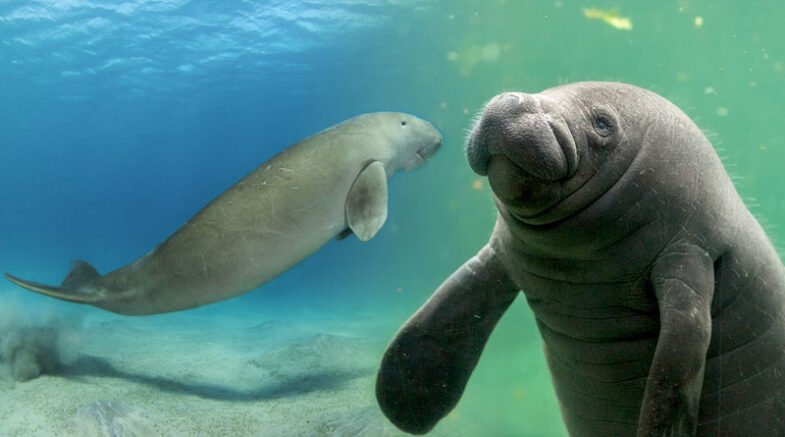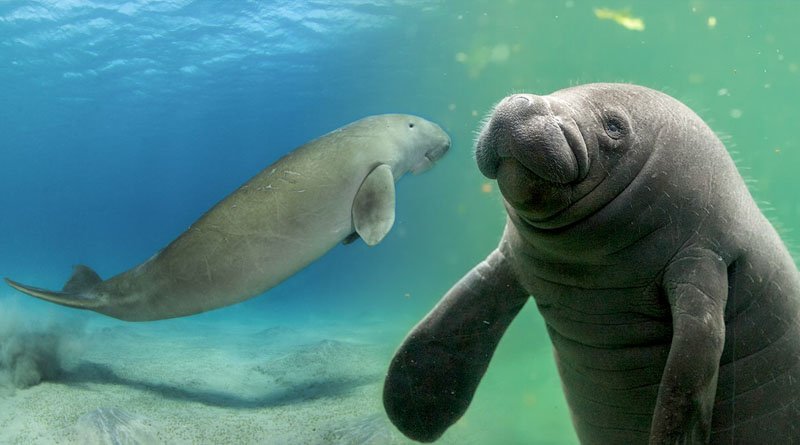West African manatees, unlike lions, giraffes, and elephants, face numerous threats from human activity. Climate change and rising water temperatures are also having an adverse effect on them.

The Pointe de Saint George is one of the few places in Senegal where you can see West African manatees, a mysterious endangered species. If you’re lucky, because they, like all legendary beings, are shy and elusive.
“We, the Diola, are powerless to stop them. It is not permitted. “You have to have mystical powers to catch one,” says Louis Diatta, sitting on the banks of the Casamance River, scanning the surface of the water and talking about West African manatees as if they were people.
“They’re just like us” he says. “Females have breasts and suckle their children. They relocate as a family. They have fins instead of arms and legs, but when you look into their eyes, you get a surprise, they appear to be half human.”
Respect for their ancestors’ traditions also prevents the locals from catching manatees, though these creatures are occasionally caught in shrimp fishermen’s nets and suffocate.
“I’ve seen it more than once,” says Diatta, whose beachside camp is called Le Lamantin (manatee in French). “Whoever this occurs to is required to notify the authorities, or they risk being heavily fined.”
Although the capture, sale, and consumption of West African manatees has been officially prohibited since 2013, there is a thriving black market in manatee meat, skin, and oil, which is said to have curative properties and is in high demand in Asia.
Illegal fishing, along with pollution, dams, the disappearance of mangrove forests, and accidental catches, are making life difficult for the manatee, which has fewer than 10,000 left in a dozen countries’ coastal waters and estuaries.
The Pointe de Saint George, an observation tower that rises above the beach, allows tourists to try to capture a priceless photograph of Trichechus senegalensis.
The journey to this location is as enchanted as the manatees themselves. A nine-kilometer path connecting this village to the rest of the world winds through massive flamboyant trees and baobabs, rice fields, and mangroves. Animal bones and gourds are carefully placed here and there.
Manatees have become a popular tourist attraction in La Pointe de Saint George and nearby Bijagos. However, due to a lack of government support, locals must develop tourist initiatives on their own.
“The observation tower has been broken for quite some time, and we are considering repairing it ourselves,” Diatta says. While the manatee’s cousins in Florida and the Amazon have been protected and the focus of conservation and research since 1975, the African manatee has had to wait 38 years, according to the Robin des Bois association.
All of this, despite the fact that this herbivore, which can grow to be more than 6ft 5in (two metres) tall and weigh more than 1,100lb (500 kilos), is critical for limiting the growth of invasive herbaceous species in the region’s rivers and lagoons.
West African manatees, unlike lions, giraffes, and elephants, face numerous threats from human activity. Climate change and rising water temperatures are also having an adverse effect on them. One issue is their low reproductive rate: females give birth to only one child after a 12- to 14-month pregnancy, then comes a two-year nursing period.
This sea cow, as it is also known, is already extinct in the Central African Republic and is likely extinct in Burkina Faso, Angola, Niger, Mali, and Chad. It survives in very limited areas of coastal regions from Senegal to Equatorial Guinea.
